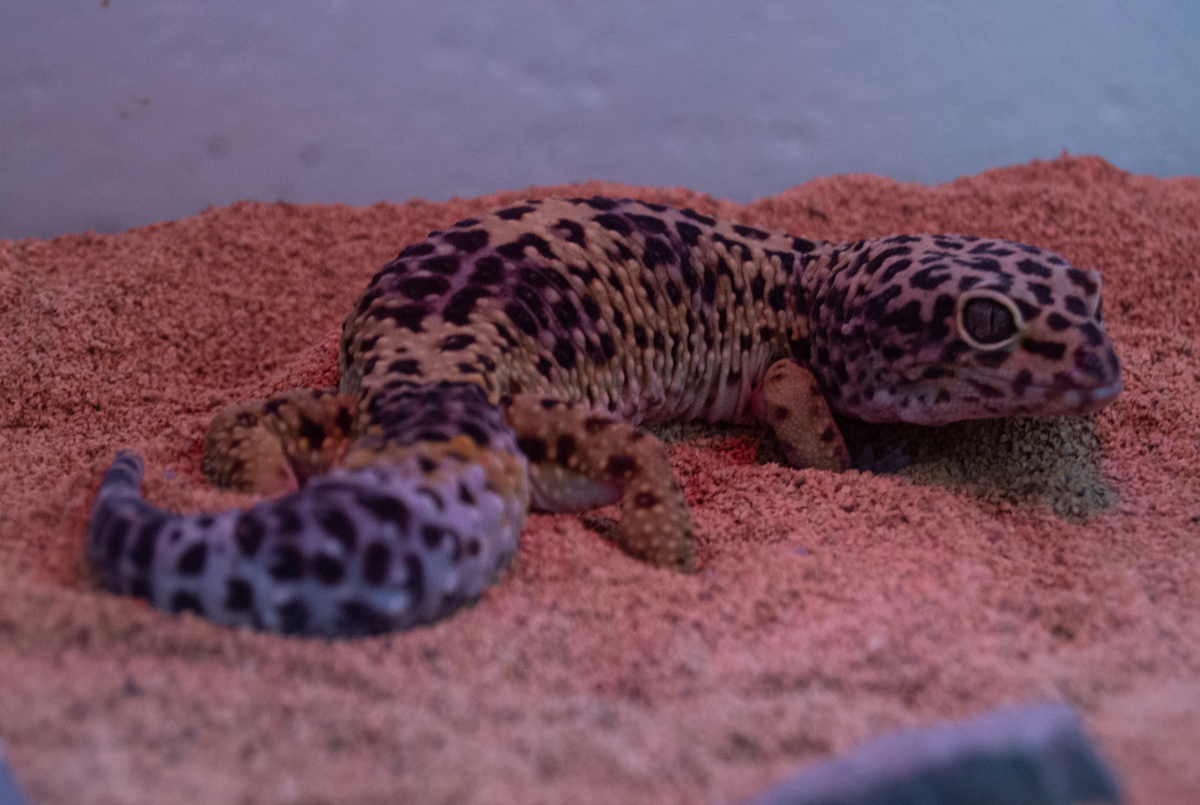Leopard Gecko

Basic Information:
Scientific Name: Eublepharis macularius
Habitat: Leopard geckos inhabit arid regions, particularly rocky deserts and sparse grasslands of Afghanistan, northwestern India, Pakistan, Iran, and Iraq. They avoid sandy deserts!
Diet: Leopard geckos eat other lizards, insects, spiders, and scorpions (leopard geckos are unaffected by scorpion stings).
Size: 0.2 to 0.7 feet long
Weight: 0.1 to 0.2 pounds
Lifespan: 3 to 8 years in the wild. 10 to 20 years in human care.
Distribution Map:
I.U.C.N. Conservation Status:

What does this mean?
Least Concern – a species determined by the International Union for Conservation of Nature (I.U.C.N.) to be pervasive, abundant, and thriving.
Our Leopard Geckos:
George (Male) – Estimated Date of Birth Between April 2002 & August 2002
Wheezy (Female) – Estimated Date of Birth Between June 2005 & August 2005
About Leopard Geckos:
Native to the deserts of various Middle Eastern countries including Afghanistan and Iran, the leopard-spotted Leopard Geckos are opportunistic predators who hunt various invertebrates but won’t turn down the ability to eat small rodents or reptiles if the chance arises. What makes this species of gecko the most unique, however, is their tail. These tails act similarly to a camel’s hump in that they are capable of storing fat. This fat is then consumed when food availability is scarce. Additionally, like all geckos, leopard geckos are capable of dropping their tail to escape danger. These tails then regenerate over time, but never to the showy extent of their original.
Did You Know?!
- Leopard geckos are opportunistic feeders meaning that they will not go out in search of prey, but will stalk prey once in sight. When attacking prey, leopard geckos wiggle their tail just before striking.
- Leopard geckos tend to be crepuscular and nocturnal, spending the daytime in rock crevices or burrows.
- When it comes to reproduction, the sex of leopard gecko babies depends on the egg’s incubation temperature. Lower temperatures = mostly females. Higher temperatures = mostly males.
- Leopard geckos differ from the arboreal geckos in that they have eyelids. Their genus name, Eublepharis, comes from the Greek word meaning “good eyelid.” With eyesight comparable to a cat’s, geckos can see better than any other lizard whose vision has been studied.
